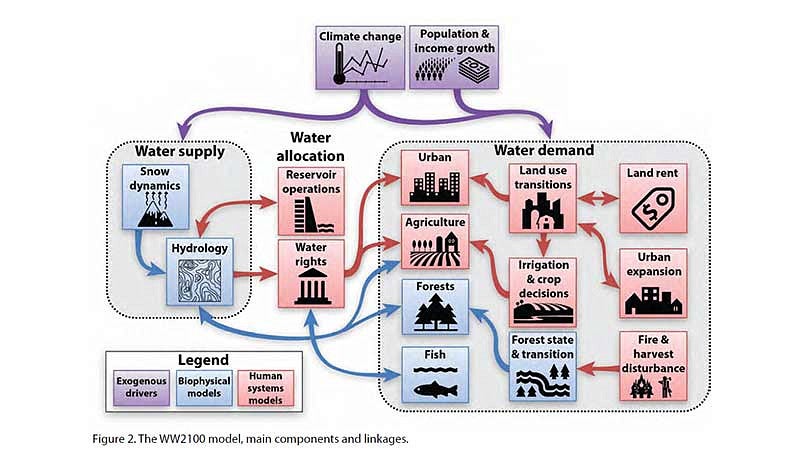Uncertainty about global climate changes heightens the need to anticipate water shortages worldwide. Adell Amos, University of Oregon Law faculty water expert, teamed up with a multi-disciplinary, multi-institutional group led by Oregon State University that published their findings in the Proceedings of the National Academy of Sciences. The Willamette Water 2100 project used an integrated approach to evaluate how climate change, population growth, economic growth, and reservoir operations will change the availability and the use of water in the Willamette River Basin over the 21st century.
In this multi-year, National Science Foundation and National Oceanic and Atmospheric Administration-funded project, researchers from law partnered with experts in the natural sciences and in economics to study water scarcity issues in the Willamette Basin. The team built a high-resolution computer model of the entire basin, and probed links between human and natural systems as they explored the complexities due to water’s variability, spatial-temporal movement, and feedbacks. Amos’ contribution focused on the institutions and laws that impact water allocation.
“This effort represents some of the most difficult and rewarding work that I have done as a researcher,” Amos says.
“The effort it takes to integrate the expertise from varied disciplines into one integrated model cannot be underestimated in terms of the time and energy it takes. The value this multi-disciplinary approach offers in the end to help in crafting possible solutions to water scarcity is invaluable.”
In modeling the effects of climate change -- an obvious external factor in water scarcity worldwide -- the researchers found, again, that the human components of the model -- economic realities and society's laws and institutions that can create or block opportunities -- make a big difference in where, when and how severely the impacts will be felt.
“The success of the project depended on getting the model right. And in the same way that it’s important to get the hydrology right, and the socio-economics right, we all learned from Adell how important it was to get the laws right, and that sets this study apart,” said Bill Jaeger, the lead author on the study.
“This type of ground-breaking academic research provides critical information to decision-makers in the State of Oregon, as well as other jurisdictions,” said Heather Brinton, director of Oregon Law’s Environmental and Natural Resources Law Center. “By creating this dynamic projection tool, we can impact future conditions through nearer-term policy choices.”
Read:
Proceedings of the National Academy of Sciences of the United States of America

